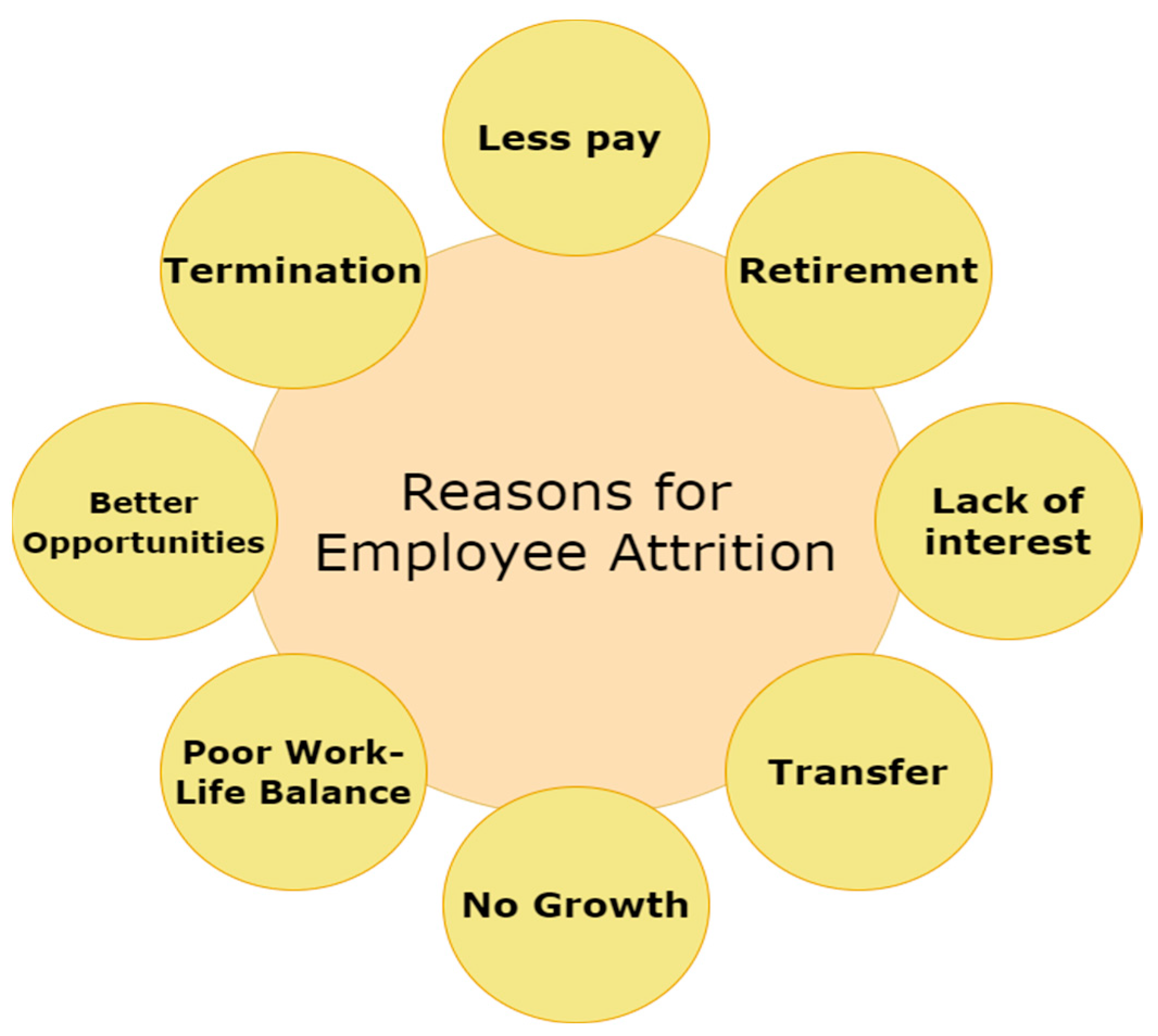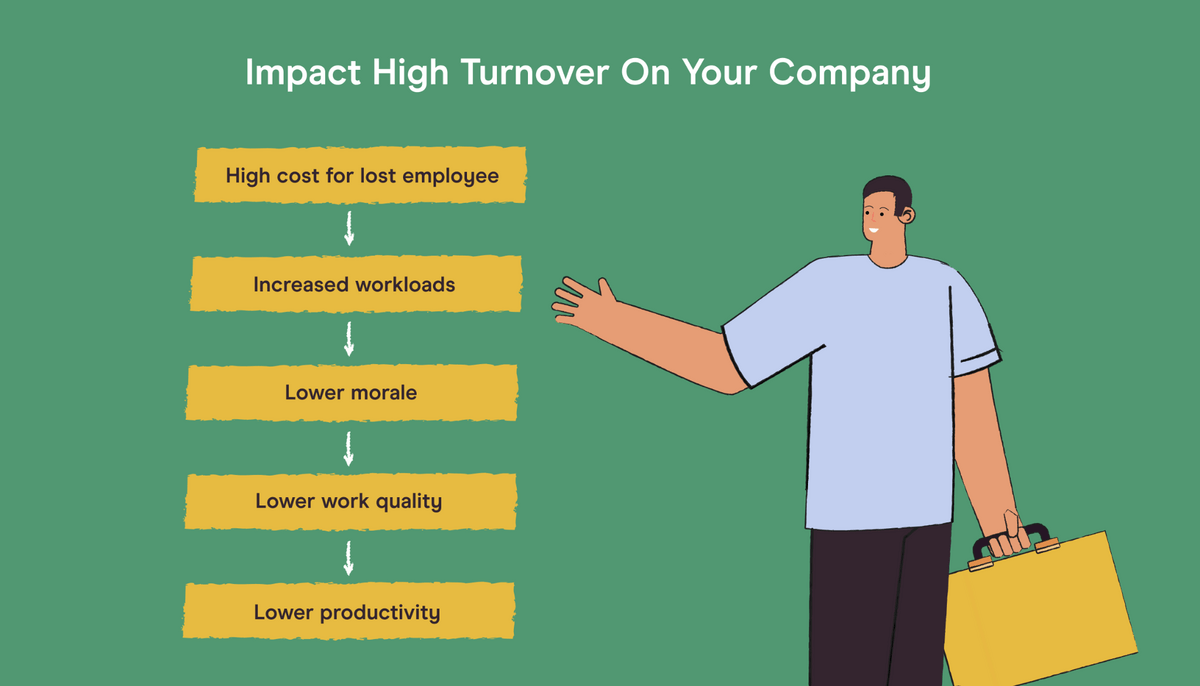Retaining top talent in the competitive engineering landscape is as crucial as attracting it. High turnover costs money and affects project continuity and team dynamics. Understanding the underlying causes and implementing effective strategies can significantly reduce turnover rates and foster a more productive and satisfied workforce.
Understanding Turnover Causes in Engineering Roles
There are many causes of turnover in engineering roles. Some of them are discussed below in detail:
1. Job Dissatisfaction
Discrepancies between what an engineer expects from their role and the reality of their daily tasks can lead to significant dissatisfaction, a key driver of turnover. For instance, many engineers are drawn to positions that promise cutting-edge work in developing new technologies or systems.
However, their initial enthusiasm can quickly wane if they are relegated primarily to maintenance tasks or repetitive work. Companies like SpaceX, known for their innovative projects, keep engineers engaged by involving them in groundbreaking projects like the Starship development, which aligns with their desire for innovation and impact.
Practical Advice: Organizations should ensure job descriptions accurately reflect the role’s responsibilities. Regular job audits and employee feedback can help managers align roles more closely with advertised expectations and engineer aspirations.
2. Lack of Growth Opportunities
Continual professional development is highly valued in engineering, where technology constantly evolves. A LinkedIn survey highlighted that 45% of job changes stem from insufficient career advancement opportunities. Engineers are typically ambitious individuals who, if they see no clear path to advance or tackle new challenges, will seek opportunities elsewhere that promise better growth.
Example: Adobe’s Check In System, which replaces traditional performance reviews with regular, informal check-ins, provides ongoing opportunities for employees to discuss their performance, career goals, and professional growth directly with their managers. This system encourages personal development and helps align individual goals with company needs, effectively addressing the career development needs that keep turnover low.
3. Compensation Issues
Competitive compensation is non-negotiable in the high-stakes field of engineering. Glassdoor reports that 45% of employees leave their jobs for higher pay than competitors offer. Salary and benefits must be regularly benchmarked against industry standards to ensure competitiveness.
Practical Advice: Companies should conduct annual compensation reviews to adjust salaries, bonuses, and benefits to reflect market trends. Google frequently reviews its compensation packages to ensure they remain attractive and competitive, which is crucial in the tech industry, where competition for top talent is fierce.
4. Workplace Culture and Management Practices
The environment in which engineers work can significantly impact their job satisfaction and loyalty. Google’s Project Oxygen identified that unsupportive management is one of the top reasons employees leave. An unsupportive or toxic culture can significantly erode employee morale and increase turnover rates.
Example: Google has also addressed this by training its managers to improve their coaching abilities, empower teams, and manage team energy. It recognizes that managers play a pivotal role in influencing workplace culture. This approach supports a positive work environment and actively engages and retains employees by making them feel valued and supported.

Impact of High Turnover
Turnover has a negative impact on the company. Some of the impacts of high turnover are as follows:
1. Cost Implications
The financial cost of replacing an employee is substantial, typically ranging from one-half to two times the employee’s annual salary. This includes costs associated with recruiting, hiring, training, and the ramp-up period to full productivity. For instance, the Society for Human Resource Management (SHRM) estimates that the average replacement cost of a salaried employee is 6 to 9 months‘ salary. An engineering role with an annual salary of $60,000 could translate to as much as $30,000-$45000 in turnover costs.
2. Loss of Institutional Knowledge
When engineers leave, they take valuable knowledge and experience that can significantly set back project timelines and innovation efforts. Businesses often lose essential tacit knowledge, which is especially critical in fields like engineering, where technical expertise drives company success.
3. Impact on Team Morale and Productivity
Frequent turnover can severely impact the morale of remaining employees, who may feel overburdened and uncertain about their job security. This can lead to decreased engagement and further turnover.

Effective Retention Strategies
The effective retention strategies are:
1. Competitive Compensation and Benefits
Compensation packages must be continually adjusted and improved to retain top talent. Salesforce reviews salaries annually and provides a comprehensive benefits package that includes health insurance, retirement plans, and stock options. To ensure competitiveness, Salesforce benchmarks its benefits against top tech companies.
2. Career Development Opportunities
Microsoft’s career model provides transparency and multiple pathways for advancement, catering to diverse career aspirations. This model includes mentorship programs, ongoing training programs, and regular performance feedback sessions, which help employees visualize their growth and future within the company.
3. Employee Recognition and Appreciation
Google has institutionalized peer recognition into its culture, which is critical in a high-performance workplace. This boosts individual morale and fosters a sense of team spirit and belonging. According to Gallup’s research, employees who do not feel recognized are twice as likely to say they will quit in the next year.
4. Work-Life Balance Initiatives
Deloitte has taken significant steps to ensure employees can effectively manage work and personal life by introducing flexible working hours, telecommuting options, and mental health days. These initiatives have led to a measurable increase in employee satisfaction and reduced stress-related absences.
5. Engaging Work Environment
3M supports engineer-driven projects through its “15% Culture,” which allows employees to spend 15% of their work time on projects of their choice, which drives innovation and personal satisfaction. This approach has resulted in successful products and a highly engaged workforce.

6. Effective Leadership and Management
General Electric’s leadership programs are renowned for creating a supportive environment focusing on continuous improvement and employee empowerment. GE invests in leadership development to ensure managers have the skills to effectively lead and motivate their teams, which is critical for reducing turnover and enhancing employee engagement.
Measuring and Monitoring Turnover
The turnover of employees should be measured and monitored to reduce in the coming years.
1. Tracking Turnover Rates
Companies must implement robust systems that track and analyze turnover rates to effectively manage and reduce employee turnover. Advanced HR analytics tools like Workday allow organizations to access detailed reports that reveal trends and patterns in turnover. These tools can segment data by department, tenure, or demographics, providing deeper insights into which areas require immediate attention.
For example, Google uses sophisticated analytics to predict which employees will likely leave based on factors like job performance and team dynamics. This allows the company to address potential issues before they result in turnover.
2. Conducting Exit Interviews
Exit interviews are critical in understanding why employees leave an organization. When conducted systematically, they can uncover valuable information that might not be captured through other means. For instance, Twitter leverages exit interview data to pinpoint common reasons for departures, enabling it to develop targeted retention strategies to address these issues proactively. By asking specific questions about management, work environment, and job satisfaction, they gather actionable insights that significantly inform their HR strategies.
3. Feedback Mechanisms
Regular employee surveys are another vital tool for measuring job satisfaction and employee engagement. Adobe, for example, conducts annual “pulse surveys” that have been crucial in reducing their turnover rate. These surveys allow Adobe to gauge employee sentiment and engagement levels across various aspects of the job and organizational culture. The feedback received helps them to make informed decisions about areas needing improvement. According to Adobe’s findings, these surveys have led to tangible changes in management practices and work policies, contributing to a 30% reduction in turnover since their implementation.
Creating a Positive Workplace Culture
There must be a positive workplace culture to reduce the turnover percentage in companies:
Fostering Open Communication
A culture of open communication significantly enhances employee satisfaction and retention. Salesforce exemplifies this by using internal social platforms like Chatter, facilitating transparent communication and feedback across all organizational levels.
These platforms allow employees to voice concerns, share successes, and offer feedback in a more informal and accessible way, which helps maintain a transparent and inclusive work environment. This approach not only boosts morale but also encourages a more engaged workforce.
Promoting Diversity and Inclusion
Intel’s commitment to diversity and inclusion has set a standard for companies to enrich their workplace culture and broaden their appeal to a diverse talent pool. Intel has invested heavily in diversity initiatives, resulting in a workforce that welcomes and embraces diversity as a key element of the company’s identity and success. For instance, Intel reports that its efforts in diversity and inclusion have not only improved its company culture but also led to a broader range of innovative solutions and perspectives, which are crucial in the tech industry.
Practical Advice
Implementing Advanced HR Analytics: Companies should invest in advanced HR tools like Workday or SAP SuccessFactors, which offer comprehensive analytics on turnover and employee behavior trends.
Structured Exit Interview Processes: Develop a structured format for exit interviews that ensures consistency and depth in the information gathered. Utilize this data to identify why employees leave and areas for improving employee engagement and satisfaction.
Regular Employee Engagement Surveys: Conduct at least bi-annual employee surveys to track satisfaction and engagement. Tools like SurveyMonkey or Qualtrics provide robust platforms for effectively gathering and analyzing this data.
Commitment to Diversity: Ensure diversity and inclusion are more than just buzzwords by setting concrete goals and metrics, much like Intel’s Annual Diversity Report, which tracks progress and holds the company accountable to its diversity commitments.
Conclusion
Reducing turnover in skilled engineering talent roles is not just about reactive measures; it involves a proactive approach to creating an environment where engineers feel valued, supported, and inspired. By continuously evaluating and adapting retention strategies with Network Mountain, companies can keep their best talent and attract top engineers looking for supportive and progressive workplaces. For HR professionals, engineering managers, and company leaders in the engineering sector, it’s time to reassess your retention strategies. Consider how you can implement these practices to enhance your team’s stability and satisfaction.
